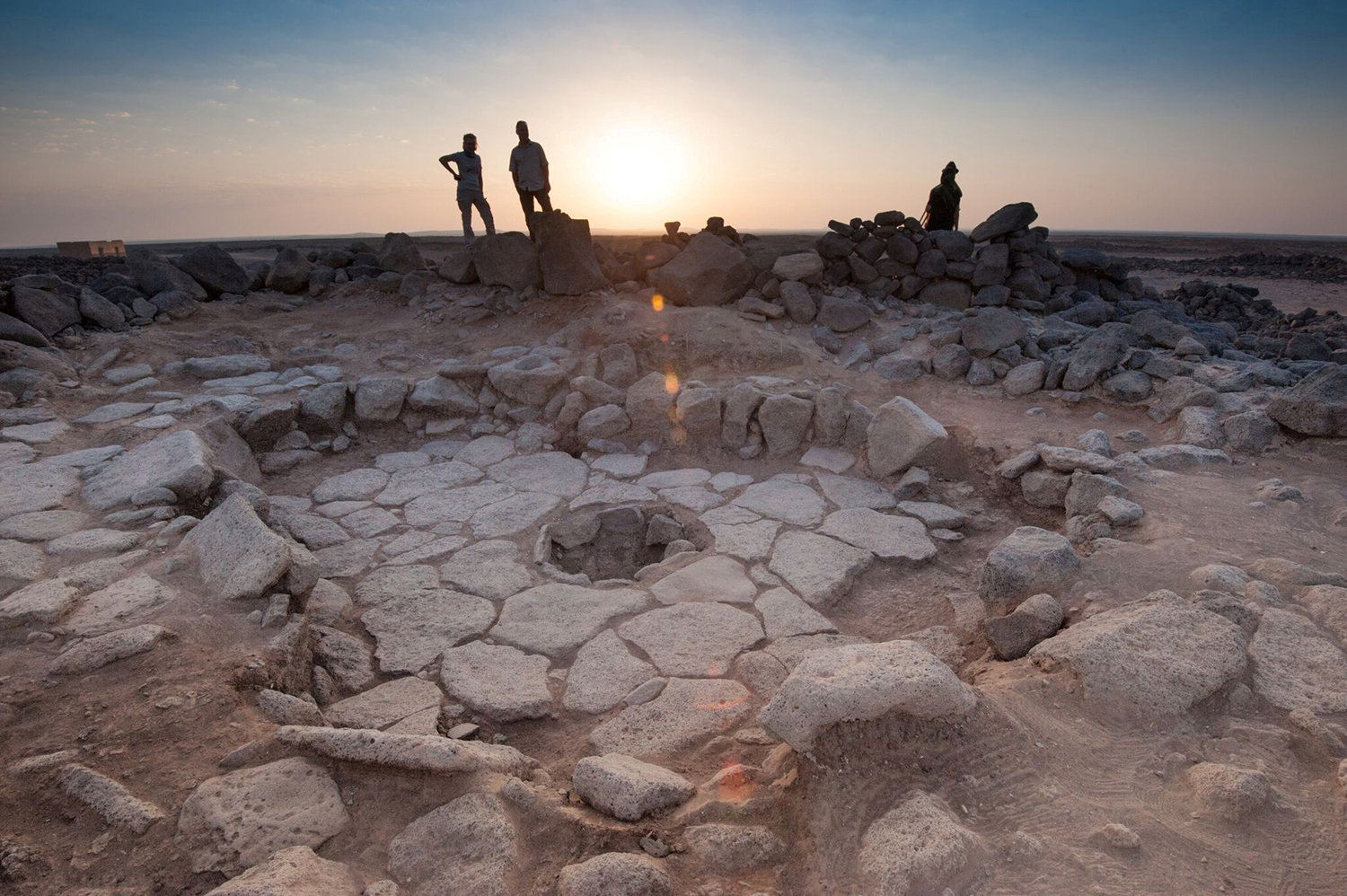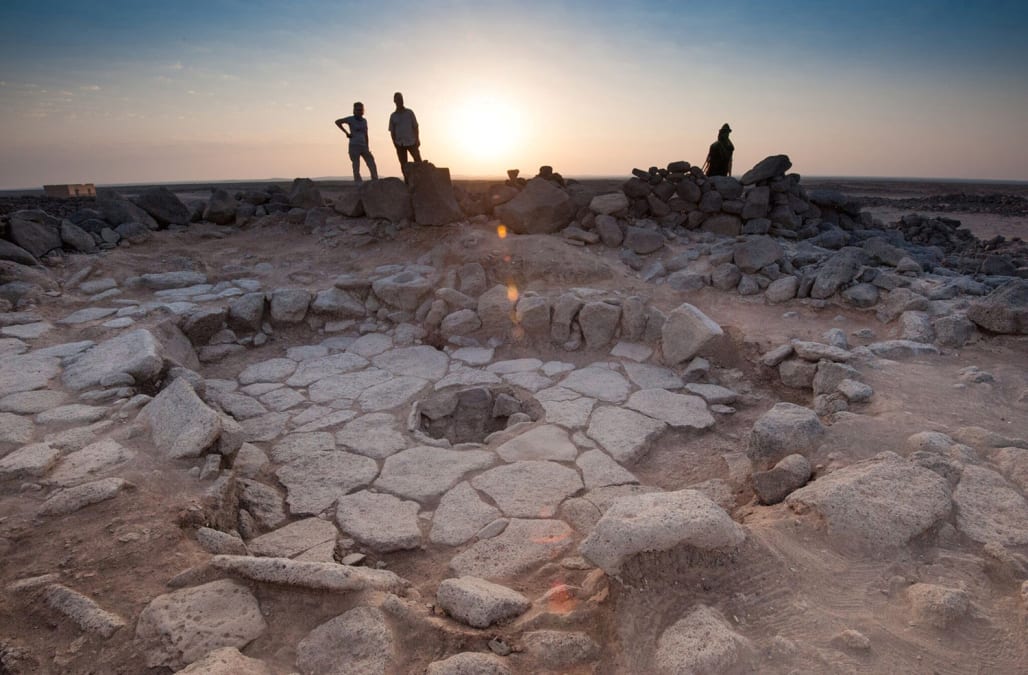WASHINGTON, July 16 (Reuters) – Charred remains of a flatbread baked about 14,500 years ago in a stone fireplace at a site in northeastern Jordan has given researchers a delectable surprise: people started making bread, a vital staple food, millennia before they developed agriculture
No matter how you slice it, the discovery detailed on Monday shows that hunter-gatherers in the Eastern Mediterranean achieved the cultural milestone of bread-making far more than previously known, more than 4,000 years before planting cultivation root
The flatbread, likely unleavened and somewhat resembling pita bread, was fashioned from wild cereals such as barley, einkorn or oats, as well as tubers from an aquatic relative papyrus, that had been ground into flour.
PHOTOS
Natufian culture in the Eastern Mediterranean
See Gallery
UNSPECIFIED – MARCH 20: Natufian burial found on Mount Carmel. Jerusalem, Rockefeller Archaeological Museum (Photo by DeAgostini / Getty Images)
UNSPECIFIED – MARCH 20: Natufian burial found on Mount Carmel. Jerusalem, Rockefeller Archaeological Museum (Photo by DeAgostini / Getty Images)
JERUSALEM, ISRAEL – NOVEMBER 4: This photo is provided by the Hebrew University of Jerusalem November 4, 2008 shows archaeologists uncovering the grave of a she-shaman Natufian period, some 12,000 years ago, at the Hilazon Tachtit archaeological site in the Western Galilee in northern Israel. The university announces the findings of recent excavations of the she-shaman's grave, she is buried with fifty tortoises, the near-compete pelvis of a leopard, the wing of a golden eagle, the tail of a cow, two marten skulls and the forearm of a wild. In addition, a human footing has been found in an adult who has been substantially larger than the average person. The university said the burial is thought to be one of the earliest known of the archaeological record and the only shaman grave in the whole region. (Photo by Naftali Hilger / Hebrew University via Getty Images)
JERUSALEM, ISRAEL – NOVEMBER 4: This undated handout picture provided by the Hebrew University of Jerusalem November 4, 2008 shows tortoise shells around the grave of a she-shaman from the Natufian period, some 12,000 years ago, at the Hilazon Tachtit archaeological site in the Western Galilee in northern Israel. The university announces the findings of recent excavations of the she-shaman's grave, she is buried with fifty tortoises, the near-compete pelvis of a leopard, the wing of a golden eagle, the tail of a cow, two marten skulls and the forearm of a wild. In addition, a human footing has been found in an adult who has been substantially larger than the average person. The university said the burial is thought to be one of the earliest known of the archaeological record and the only shaman grave in the whole region. (Photo by Naftali Hilger / Hebrew University via Getty Images)
JERUSALEM, ISRAEL – NOVEMBER 4: This photo is provided by the Hebrew University of Jerusalem November 4, 2008 shows a pair of tortoise shells, part of the exceptional funerary offerings from the Natufian period, some 12,000 years ago, at the Hilazon Tachtit archaeological site in the Western Galilee in northern Israel. The university announces the findings of recent excavations of the she-shaman's grave, she is buried with fifty tortoises, the near-compete pelvis of a leopard, the wing of a golden eagle, the tail of a cow, two marten skulls and the forearm of a wild. In addition, a human footing has been found in an adult who has been substantially larger than the average person. The university said the burial is thought to be one of the earliest known of the archaeological record and the only shaman grave in the whole region. (Photo by Gideon Hartman / Hebrew University via Getty Images)
Limestone grinding tool from the Natufian culture, from the Eastern Mediterranean region. Dated 9,800 BC. (Photo by Universal History Archive / UIG via Getty Images)
Limestone grinding tool from the Natufian culture, from the Eastern Mediterranean region. Dated 9,800 BC. (Photo by Universal History Archive / UIG via Getty Images)
Limestone grinding tool from the Natufian culture, from the Eastern Mediterranean region. Dated 9,800 BC. (1965)
HIDE CAPTION
SHOW CAPTION
It was made by a culture called the Natufians, who had begun to embrace a sedentary rather than a nomadic lifestyle, and was found at a Black Desert archeological site.
"The presence of bread at a site of this age is exceptional," said Amaia Arranz-Otaegui, a University of Copenhagen postdoctoral researcher in archeobotany and lead author of the research published in the journal Proceedings of the National Academy of Sciences.
Arranz-Otaegui, et al. The previous oldest evidence of a cam from a 9,100-year-old site in Turkey.
 (A stone structure at an archeological site containing a fireplace, seen in the middle, where charred remains of 14,500-year-old bread was found in the Black Desert, in Northeastern Jordan in this photo provided July 16, 2018. Alexis Pantos / Handout via REUTERS)
(A stone structure at an archeological site containing a fireplace, seen in the middle, where charred remains of 14,500-year-old bread was found in the Black Desert, in Northeastern Jordan in this photo provided July 16, 2018. Alexis Pantos / Handout via REUTERS)
"We have had to assess whether there is a relationship between bread production and the origins of agriculture," Otaegui said. "It is possible that bread can be provided for an incentive for growing and farming, if it has become a desirable or much-sought-after food."
University of Copenhagen archeologist and study co-author Tobias Richter pointed to the nutritional implications of adding bread to the diet. "Richter said," These vitamins, iron, and magnesium, "Richter said.
Abundant evidence from the site indicated the Natufians had a meat-and-plant-based diet. . The round floor fireplaces, made from flat basalt stones and measuring a yard in diameter, were located in the middle of huts.
Arranz-Otaegui said the researchers have begun to reproduce the bread, and succeeded in making flour of the type of tubers used in the prehistoric recipe.
"The taste of the tubers," Arranz-Otaegui said, "is quite gritty and salty. , a University of Copenhagen postdoctoral researcher in archaeobotany, and Ali Shakaiteer, a local assistant to researchers working at an archeological site in the Black Desert in Northeastern Jordan, are seen collecting this crop in July 16, 2018. Joe Roe / Handout via REUTERS)
(Reporting by Will Dunham, Editing by Sandra Maler)
 (A stone structure at an archeological site containing a fireplace, seen in the middle, where charred remains of 14,500-year-old bread was found in the Black Desert, in Northeastern Jordan in this photo provided July 16, 2018. Alexis Pantos / Handout via REUTERS)
(A stone structure at an archeological site containing a fireplace, seen in the middle, where charred remains of 14,500-year-old bread was found in the Black Desert, in Northeastern Jordan in this photo provided July 16, 2018. Alexis Pantos / Handout via REUTERS) 